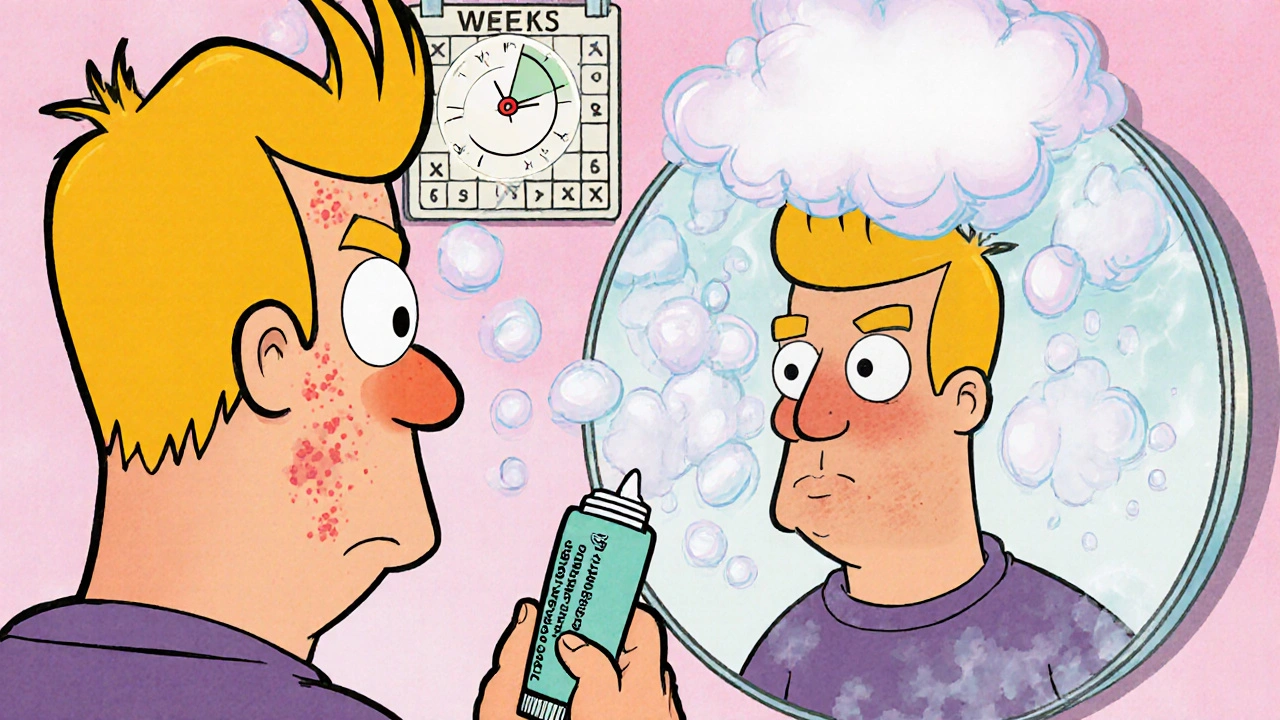Tazarotene Results: What to Expect and How It Works for Skin
When you start using tazarotene, a topical retinoid prescribed for acne and plaque psoriasis. Also known as Tazorac, it works by speeding up skin cell turnover to clear clogged pores and reduce thick, scaly patches. Unlike some acne treatments that just calm redness, tazarotene actually changes how your skin renews itself — which is why results take time and don’t always look good at first.
People often ask how long until they see tazarotene results. Most users notice some improvement in 4 to 8 weeks, but full effects can take up to 12 weeks. That’s because it’s not masking symptoms — it’s rebuilding skin from the inside out. If your skin gets dry, flaky, or red early on, that’s normal. It’s not failing; it’s adjusting. Tazarotene works best when used consistently, even when your skin feels irritated. Skipping doses because of irritation actually slows down results.
The skin conditions it targets — acne and plaque psoriasis — respond differently. For acne, tazarotene unclogs pores and reduces blackheads and whiteheads over time. For psoriasis, it flattens raised, scaly plaques by forcing abnormal skin cells to shed faster. It’s not a cure, but it’s one of the most effective topical options for both. Many users combine it with moisturizers to reduce peeling, or use it every other night to ease into it. Some dermatologists pair it with corticosteroids for psoriasis to cut down on inflammation while still letting tazarotene do its job.
Side effects are common but manageable. Burning, stinging, and peeling are the most frequent complaints. These usually settle down after a few weeks as your skin builds tolerance. If you’re using it on your face, avoid sun exposure — tazarotene makes skin more sensitive to UV rays. Always wear sunscreen. Also, don’t use it with other harsh exfoliants like scrubs or high-dose salicylic acid unless your doctor says it’s okay. It’s not for everyone: pregnant women should avoid it, and it’s not approved for kids under 12.
What you won’t find in ads is how real people manage the rough patches. Some use it only on affected areas, not the whole face. Others apply moisturizer first, then wait 10 minutes before applying tazarotene to buffer the sting. A few switch to a lower strength after initial improvement. The key is patience and consistency. If you stop too soon, you lose progress. If you push too hard, you risk irritation that makes you quit.
Below, you’ll find real user experiences and clinical insights on how tazarotene performs over time, how it compares to other retinoids like tretinoin, what to do when side effects hit, and how to make it work for your skin type without burning out. These aren’t marketing stories — they’re practical lessons from people who’ve been through it.




